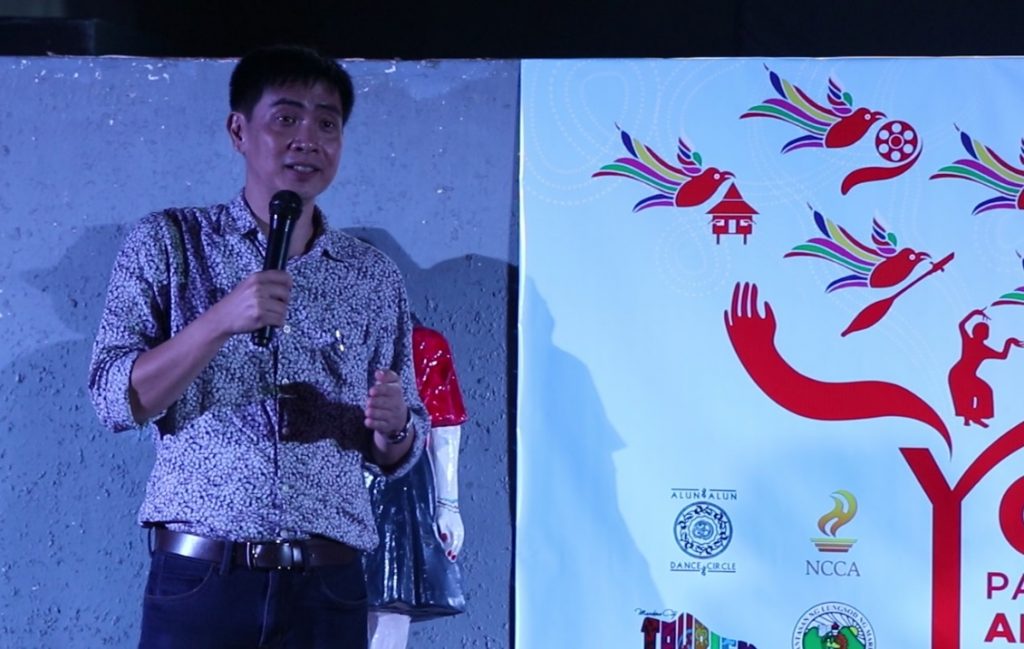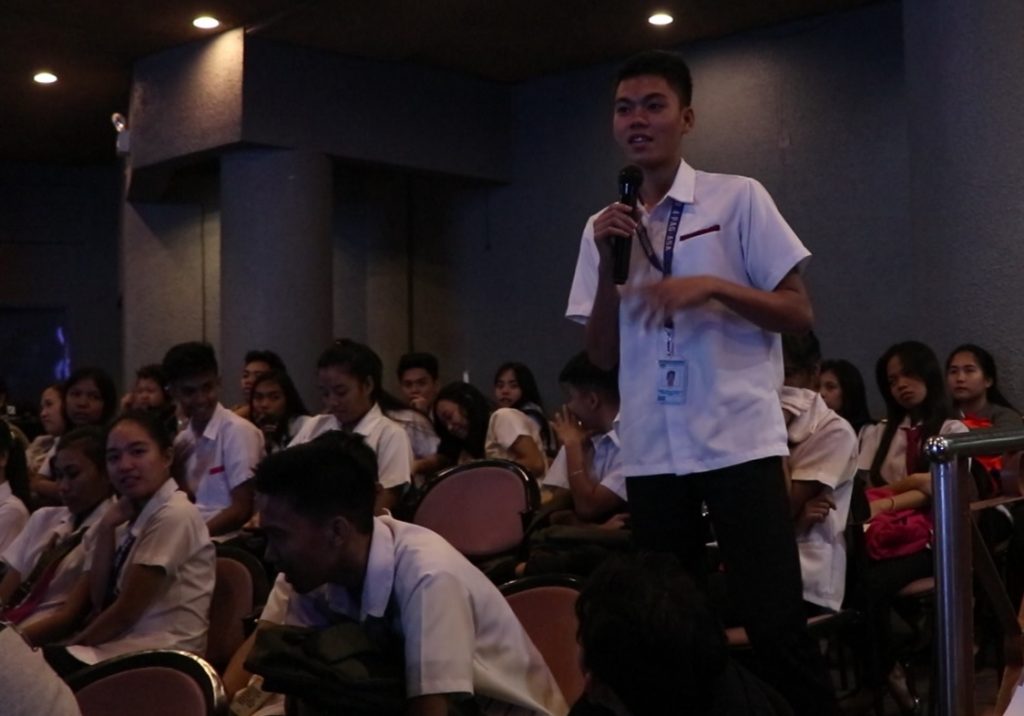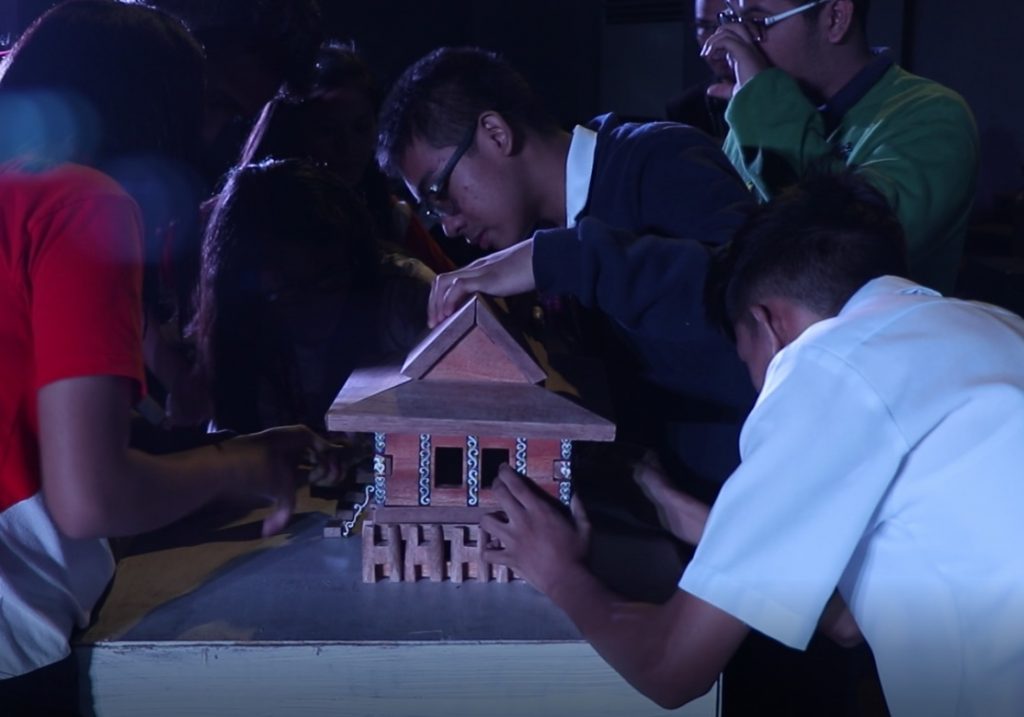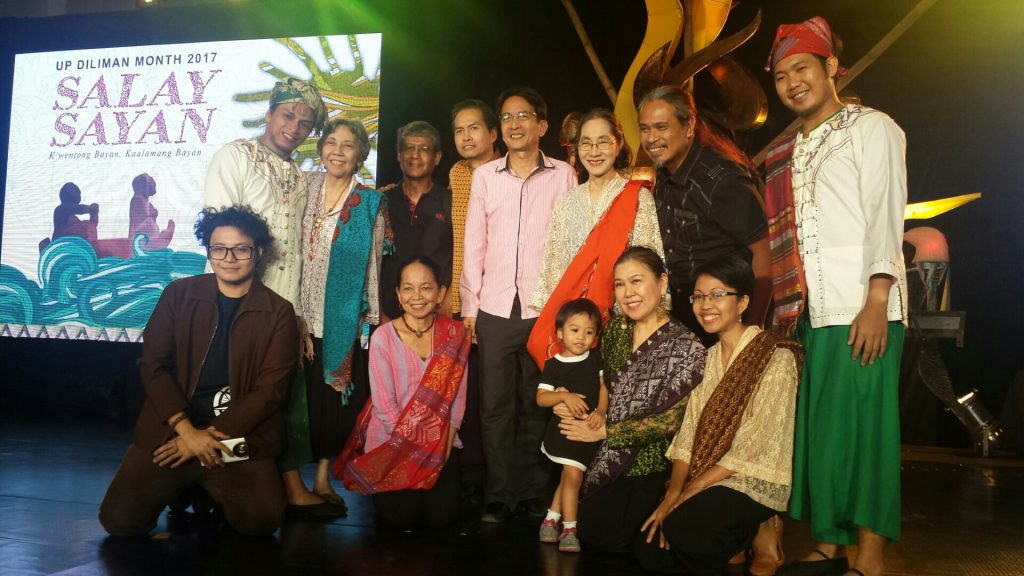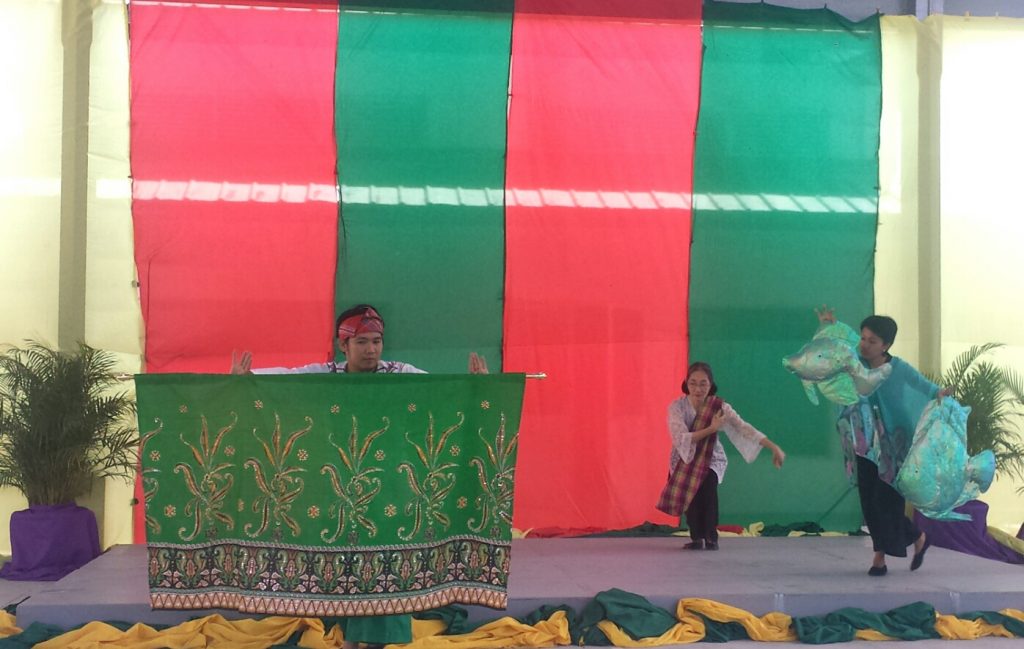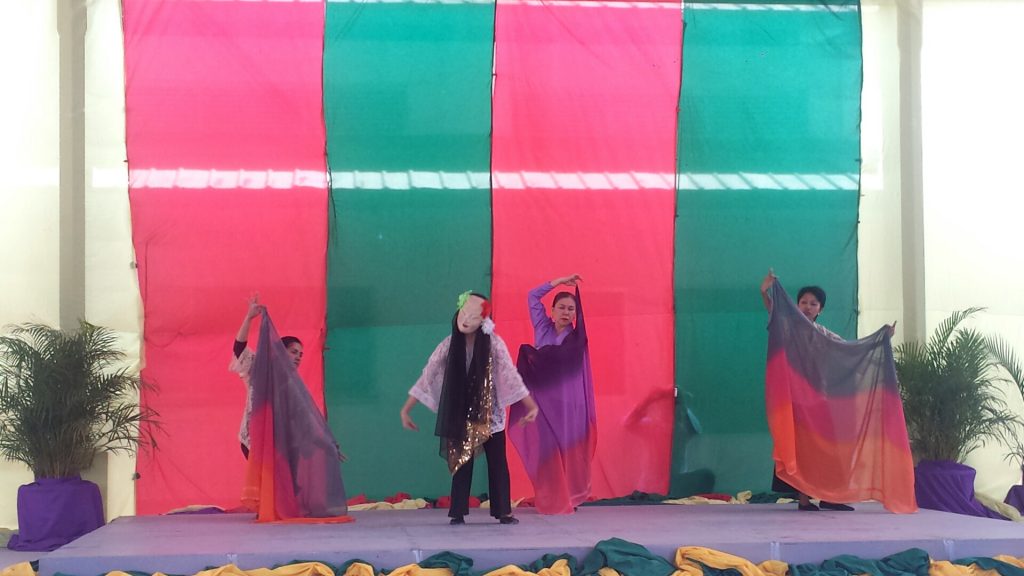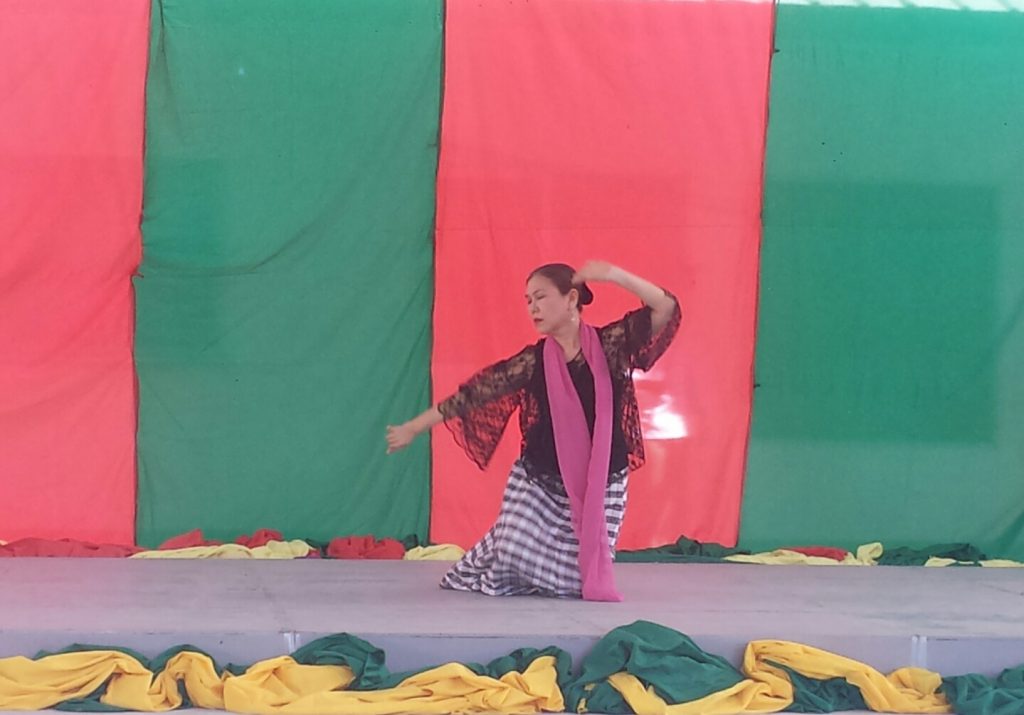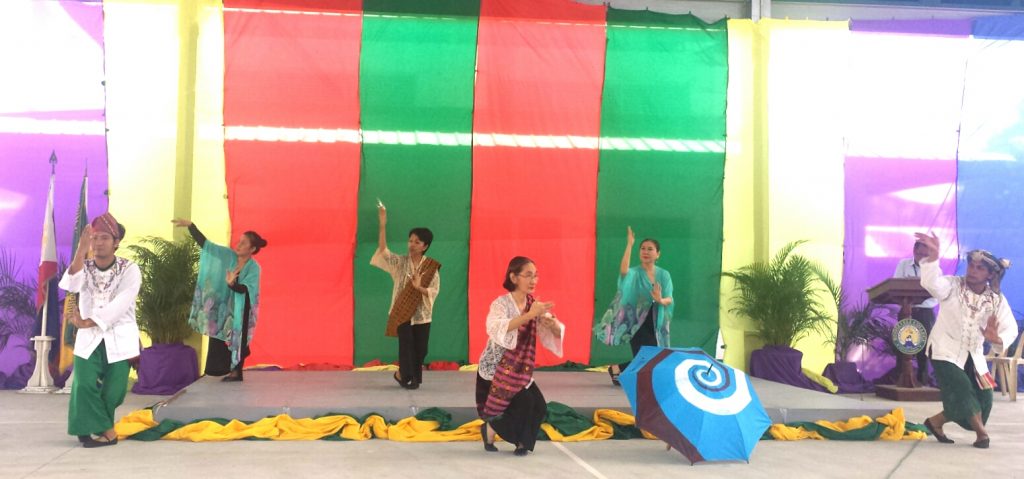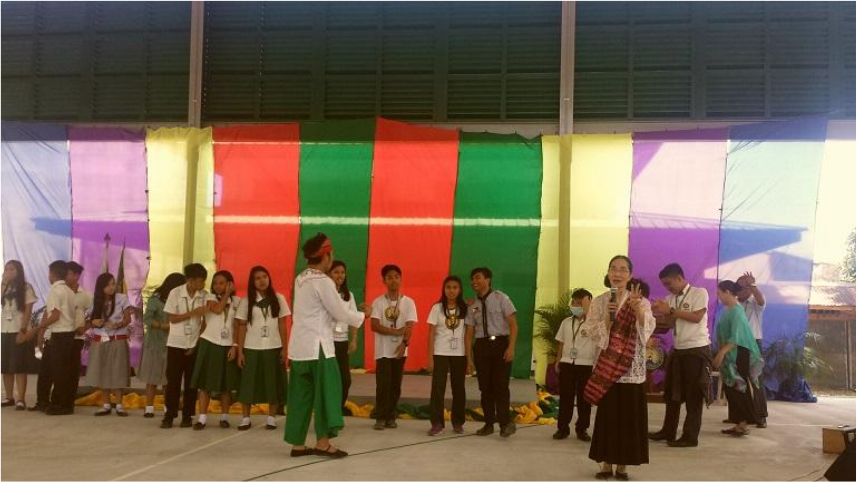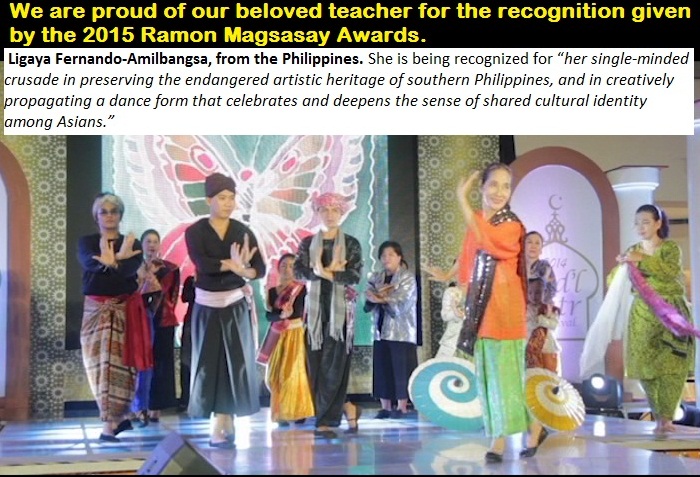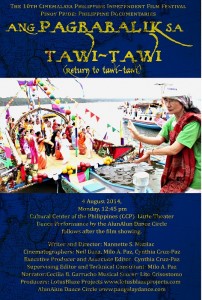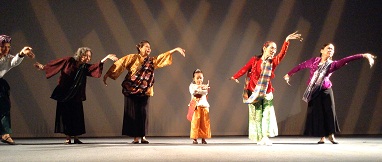Youth Participation in Art and Cultural Heritage to Develop National Pride
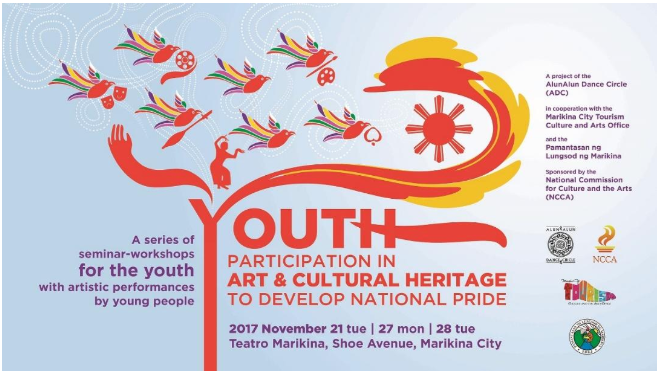
TOTAL NUMBER OF PARTICIPANTS AND AUDIENCE: 3000, majority were from Pamantasan ng Lungsod ng Marikina; other participants were teachers from DepEd, selected elementary students, cultural workers of Marikina City, and students from other colleges
VENUE
The seminar was held at the Teatro Marikina, 89 Shoe Avenue, Marikina City. It is the best location due to its proximity to the target audience.
 The Youth Seminar at the Teatro Marikina, here with guest youth performers: UP Tugma (UP College of Music) as musicians and Kalumpang Elementary school students
The Youth Seminar at the Teatro Marikina, here with guest youth performers: UP Tugma (UP College of Music) as musicians and Kalumpang Elementary school students
FUN AND PARTICIPATORY
The seminar-workshop was conceptualized to be: fun, interactive, arts- and performance-oriented, and enlightening. Performing groups were the AlunAlun Dance Circle, Marikina Dance Guild, Batlaya Theater Group, Kalumpang Elementary School students, Young Focus streetchildren, among others.
ADC Staff and dance trainers Mannex Siapno, Joy Ricote, Lyn Literal with their pangalay students who are also members of the Marikina Dance Guild. This is at the lobby of the Teatro Marikina just before their performance of pangalay in the Youth Seminar.
THE SEMINAR-WORKSHOP IN PICTORIAL NARRATIVE:
21 November 2017, Tuesday (Day 1)
Opening Activities after the Registration: National Anthem, Prayer, and Speech by the Marikina Mayor’s representative.
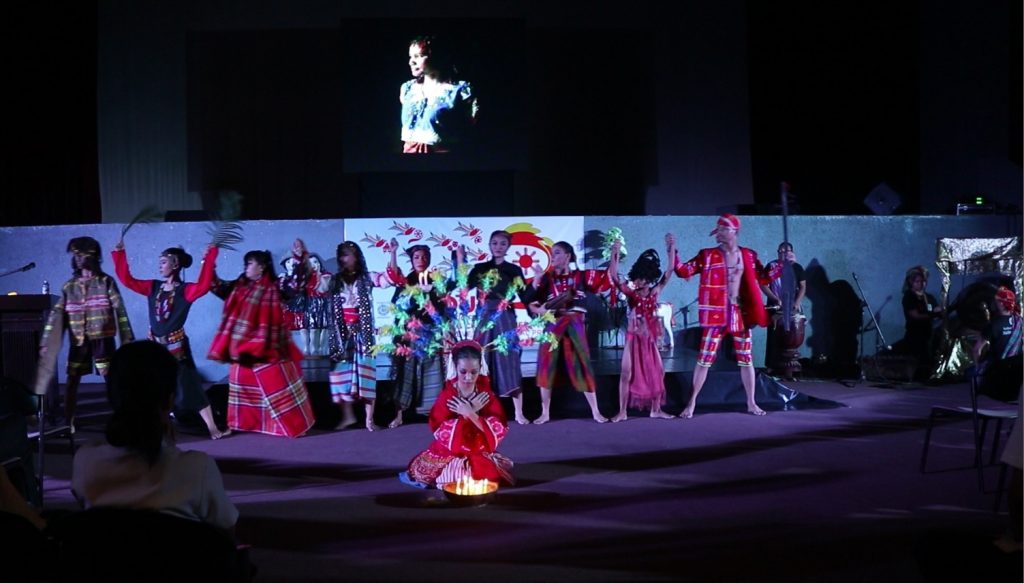
Introduction:
Why Young People Should Participate in Philippine Art and Culture
By ADC President: Cecilia B. Garrucho

Sana ay mapukaw din ng ating mga diskusyon ang inyong pagkamalikhain—sigurado akong kayang-kaya nyong gumawa ng mga memes, vines, blogs, at vlogs tungkol sa ating kultura, na mas magiging interesante sa bagong henerasyon!
– CB Garrucho
Performance:
The inspirational talk by Cecilia B. Garrucho was capped by a new and original choreography by ADC, “Bayan Ko,” which was first sung by Atang de la Rama—later a National Artist for Theater—mainly for the underprivileged classes in the 1920s.
Music by Constancio de Guzman and lyrics by Jose Corazon de Jesus, the rendition was sung by a foreign choral group to show how this nationalistic song is likewise appreciated by foreign cultures.
Introduction to Philippines Cinema, Performance: Dances in Philippine Movies
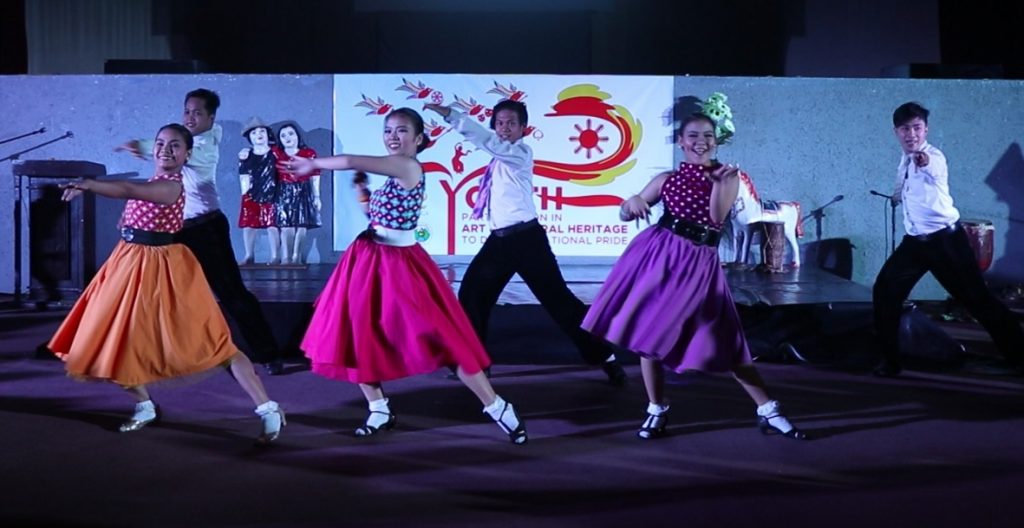
Marikina Dance Guild performed dances in Philippine movies as a prelude to the talk and discussion on Philippine Cinema.
2nd Lecture-Discussion: 10:00 a.m. to 12:00 p.m.
The Role of Philippine Cinema and Film Artists in Shaping the Nation and Filipino Identity, with Focus on the Current Situation and Issues in the 21st Century
Lecturer-facilitator:
PROF. PATRICK F. CAMPOS

He is an assistant professor at the University of the Philippines (UP) Film Institute, the director of the Office of Research of the UP College of Mass Communication, and a member of the cinema committee of the National Commission for Culture and the Arts of the Philippines. He is a coauthor of Communication and Media Theories (2014), and the author of From Cave to Cloud (2016) and The End of National Cinema: Filipino Film at the Turn of the Century (2016).
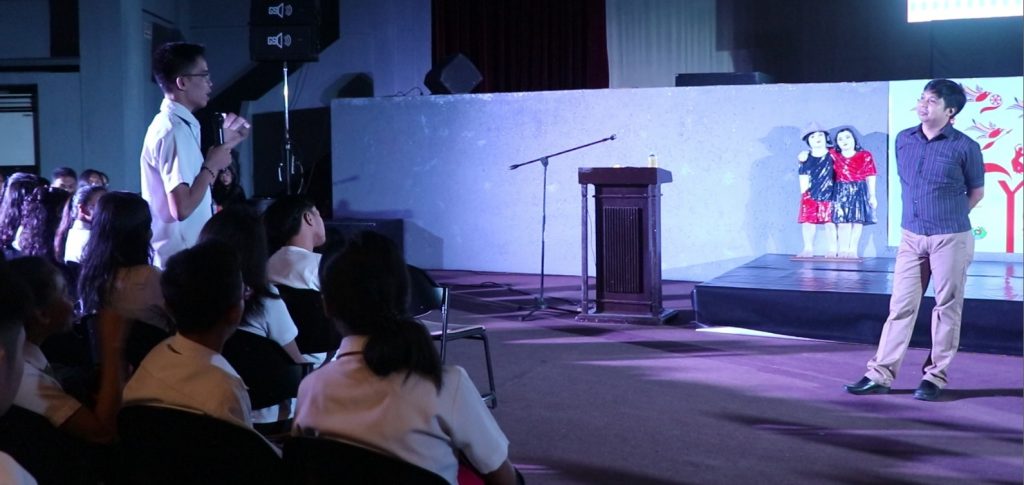
Afternoon session on the first day
Performance:
Parade of costumes and material culture as visual expression by the AlunAlun Dance Circle and Marikina Dance Guild
3rd Lecture-Discussion: 1:30-3:30 pm
Artists and their Artworks that Helped Build Filipino Identity and a Sense of Nationhood
Lecturer-facilitator: DR. ROBERTO G. PAULINO
He is an associate professor at the Department of Art Studies, College of Arts and Letters in UP Diliman, where he also obtained his doctorate degree in Philippine Studies. He is the recipient of the Washington Sycip Award for Best General Education Learning Material conferred by the Office of the Vice President for Academic Affairs, University of the Philippines. He is coauthor of The Life and Art of Botong Francisco, 2009.
Dr. Paulino engaged the participants with insights about major art works in Philippine visual arts which date back in precolonial times.
Closing Performance on the 1st day: New Pangalay Choreography performed by Students from Kalumpang Elementary School
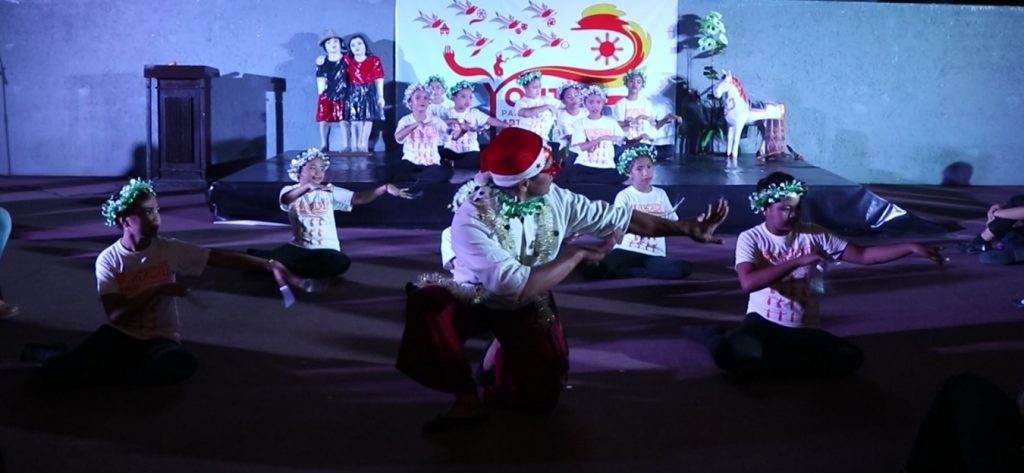
The girls of Kalumpang Elementary School performed a new choreography, an original composed and sung by Ryan Caybyab, “Kumukuti-kutitap.” The lively Christmas song is choreographed using the pangalay movement vocabulary. Dancers wear the janggay or metal claws. Teacher Mannex Siapno dances with members of Kalumpang Elementary School (KES), “Kumukuti-kutitap” as a pre-Christmas, happy dance number.
Some members of the Marikina Dance Guild joined the KES children at the finale of the song—a colorful and festive ending for the first say of the youth seminar.
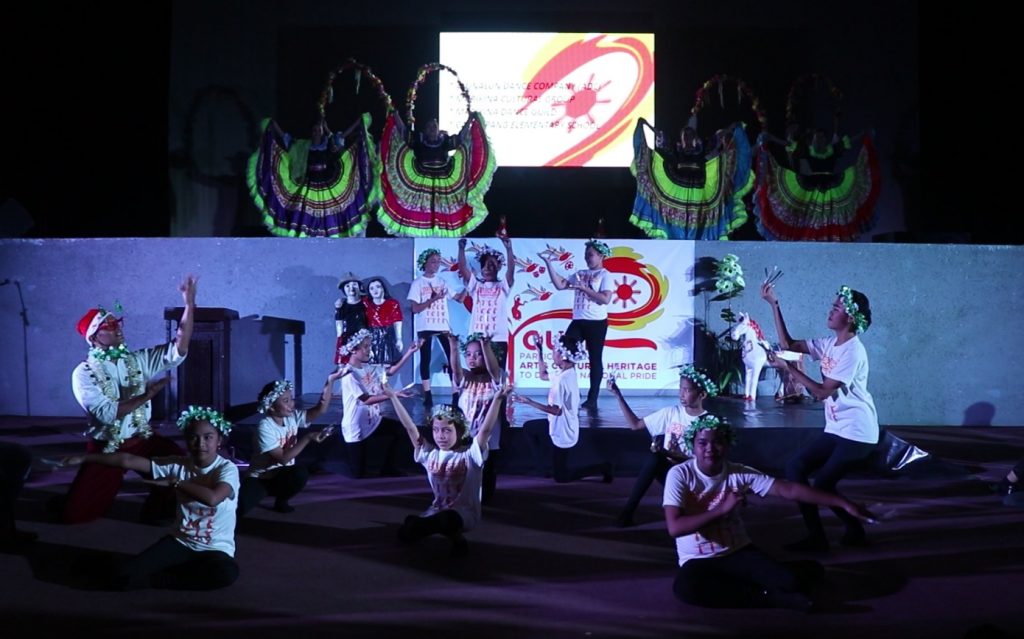
27 November 2017, Monday (Day 2)
1st Lecture: 9:00-10:30 am
Spoken Word as a Literary Form of the Filipino Youth
Featured Artists: WORDS ANONYMOUS

Henry Igna and Louise Meets of Words Anonymous gave their talk about spoken word with their own theatrical performances. Then after their lecture about spoken word, they encouraged participants to create their own spoken word pieces through some writing exercises. The facilitators were impressed with the rich sharing of spoken word creations by the audience. The workshop ended with a performance of the lecturers.
Intermission and Introduction to the Second Session:
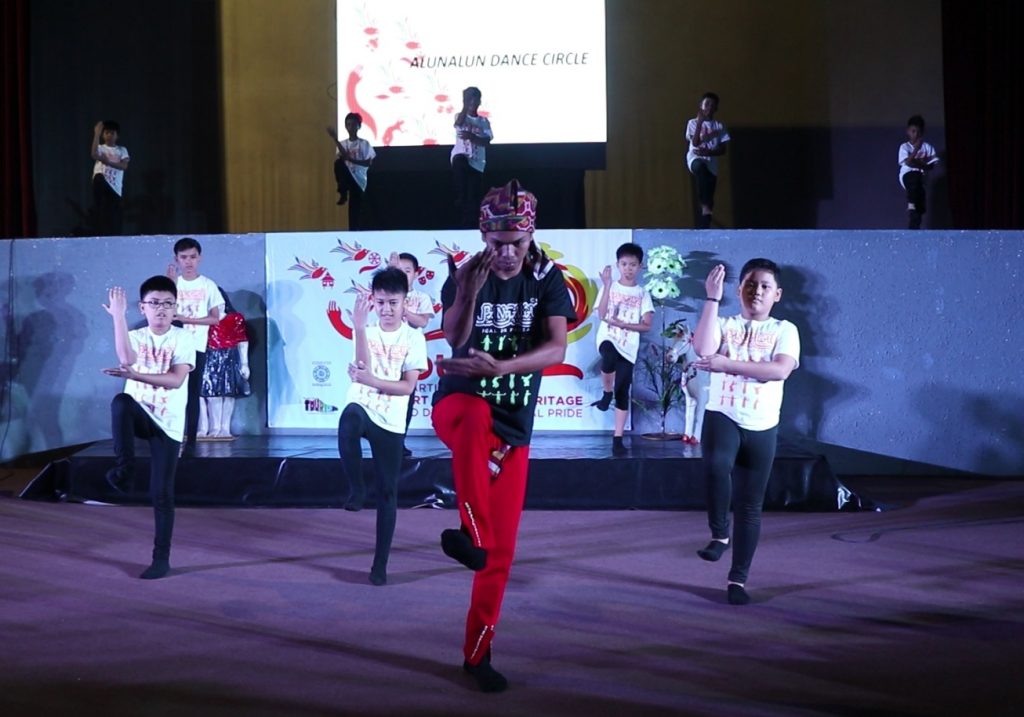
To introduce the next lecture on Philippine Music was a performance of Langka Silat by Boys from KES boys and Young Focus. Arafa Biste of AlunAlun danced with his trainees in Langka Silat, a martial art tradition. Gloc 9’s “The Bobo Song” was performed by boys of Kalumpang Elementary School and out-of-school boys of Young Focus who are either streetchildren or scavengers of the dumpsite in Tondo, Manila.
2nd Session in Day 2: 10:40 a.m. – 12:00 p.m.
Mula Noon Hanggang sa Ika-21 Siglo: Ang Makapangyarihang Papel ng mga Musikero at ang Kanilang Musika para sa Pagbabago ng Lipunang Pilipino

Lecturer-facilitator: Prof. ARWIN Q. TAN
He studied choral conducting and musicology at the University of the Philippines, College of Music, and graduated magna cum laude of class 2000. He is an assistant professor at the UP College of Music under the Department of Musicology. Prof. Tan is the founder and choirmaster of the multi-awarded Novo Concertante Manila. He was given an Ani ng Dangal award by the NCCA in 2012.
Prof. Tan’s lecture-demonstration focused on the beauty and complexity of indigenous music in the Northern and Southern Philippines. He underlined the importance of music in the lives of Filipinos – in healing, in preparing for war, in celebrations, in all aspects of life. The participants had a chance to play musical instruments and follow the local rhythms of the indigenous peoples. He ended by teaching the melody of an indigenous song and instructing about round singing of a Cordillera folk song.
LUNCH BREAK
Introduction to the Session on Philippine Architecture: A Drama Performance
Dramatization:
Beginnings of River Settlements by the Marikina River up to the Birth of the Shoe Industry (from Jesus dela Peña Church to Kapitan Moy Heritage House) by the Batlaya Theater Guild of Pamantasan ng Lungsod ng Marikina
Below: A scene from the theater presentation about the evolution of community settlements in Marikina.
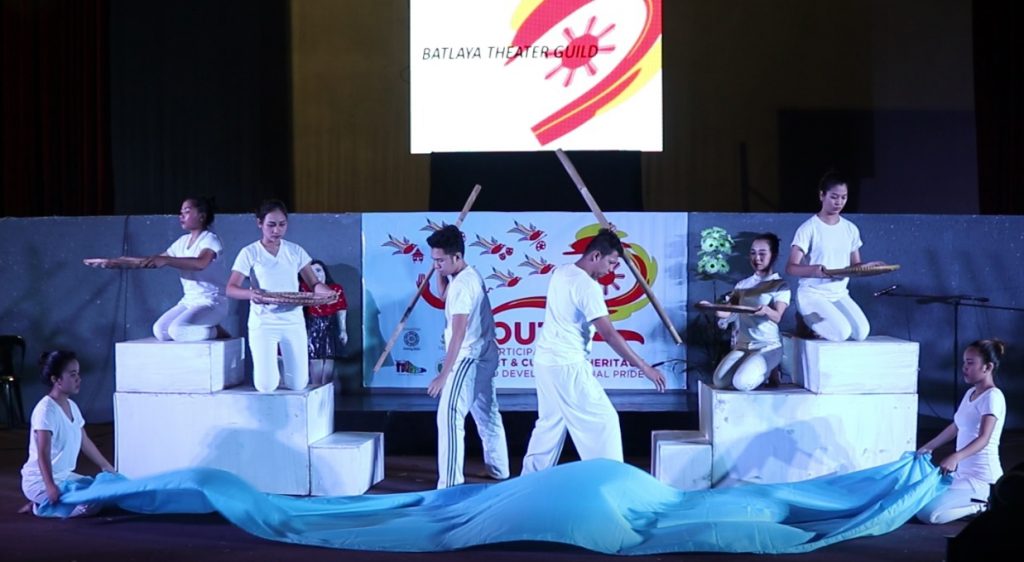
3rd Lecture-Discussion 1:45 – 3:30 pm
Protecting Architectural Heritage as the Symbol of the People’s Culture and Identity
Lecturer-Facilitator: EDGAR ALLAN M. SEMBRANO
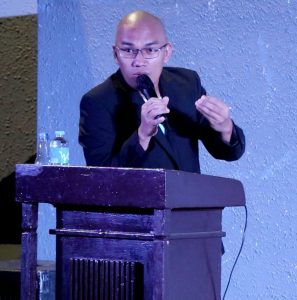
A passionate cultural heritage advocate, he obtained a bachelor’s degree in journalism from the Polytechnic University of the Philippines in 2004. He is a regular contributor in the Lifestyle section of the Philippine Daily Inquirer, writing on cultural heritage and the arts. He is a Master of Arts candidate of the Cultural Heritage Studies program of the University of Santo Tomas Graduate School and the associate editor of the Architecture Volume of the CCP Encyclopedia of Philippine Art, second edition.
Mr. Sembrano explained the criteria in determining the significance of built structures and natural sites with some information about controversial issues. He discussed the various challenges and causes of destruction of heritage sites such as natural causes like disasters and man-made causes like over-tourism, over-development, and big business. To make the participants understand the significance of Philippine architectural design, he asked a group of students to build a modular puzzle modelled after the Maranao torogan, with some time pressure.
Mr. Sembrano gave importance to heritage conservation and how the community achieves sustainable development for its own people.
28 November 2017, Tuesday (Day 3)
Performance to introduce the session on Philippine Theater:
Tawti (a mimetic dance on fishing) performed by the male dancers of Marikina Theater Guild who were trained by the AlunAlun Dance Circle
Live kulintangan ensemble music by UP Tugma (College of Music)
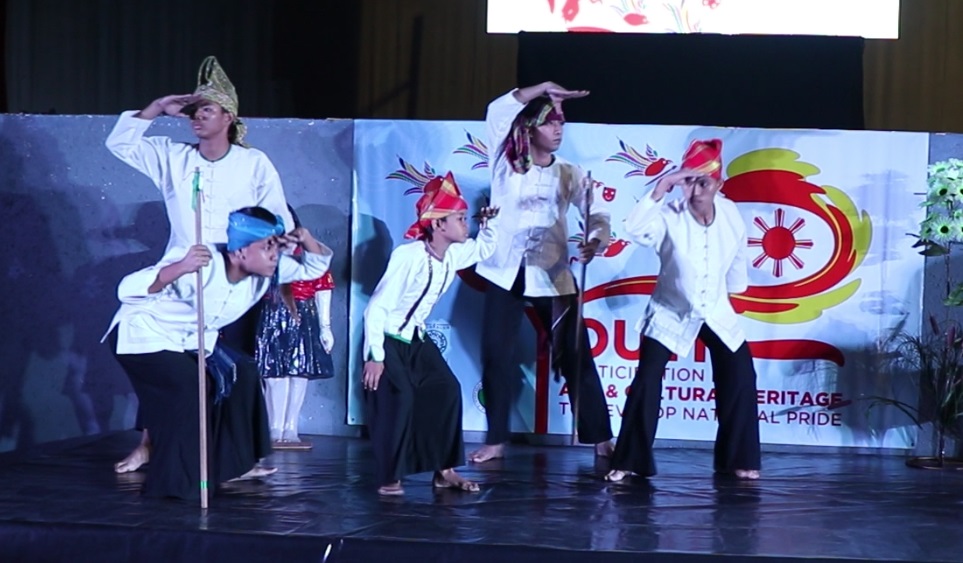
Male dancers of Marikina Dance Guild performs Tauti which the AlunAlun Dance Circle taught them in the course of the pangalay workshop with them in October 2017. Tauti is a mimetic dance that imitates how fishermen catch catfish.
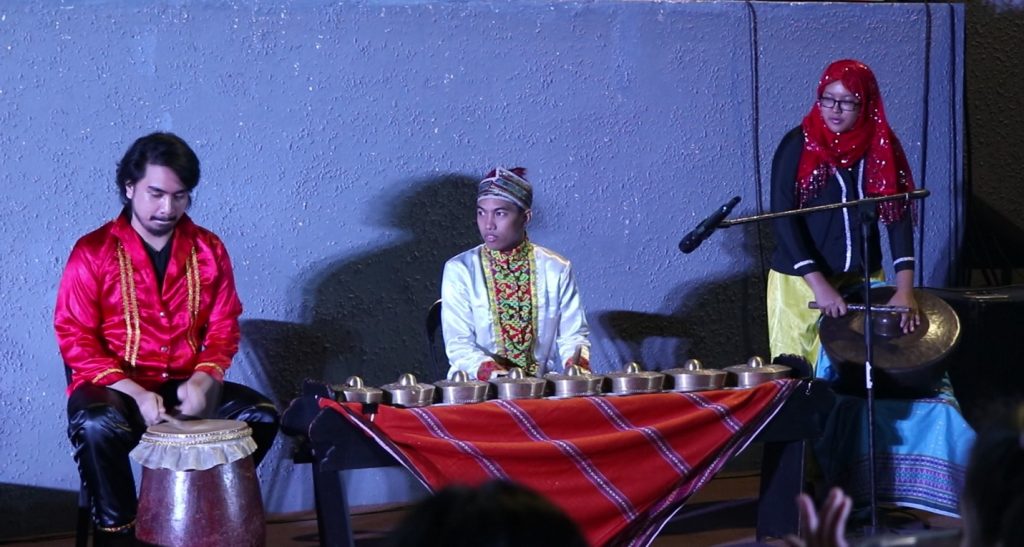
UP TUGMA, college students from UP College of Music
Lecture-Discussion 9:30 – 11:30:
The Role of Philippine Theater Traditions in the Shaping of National Identity, with focus on current issues in the 21st Century
Lecturer-facilitator: DR. JERRY RESPETO
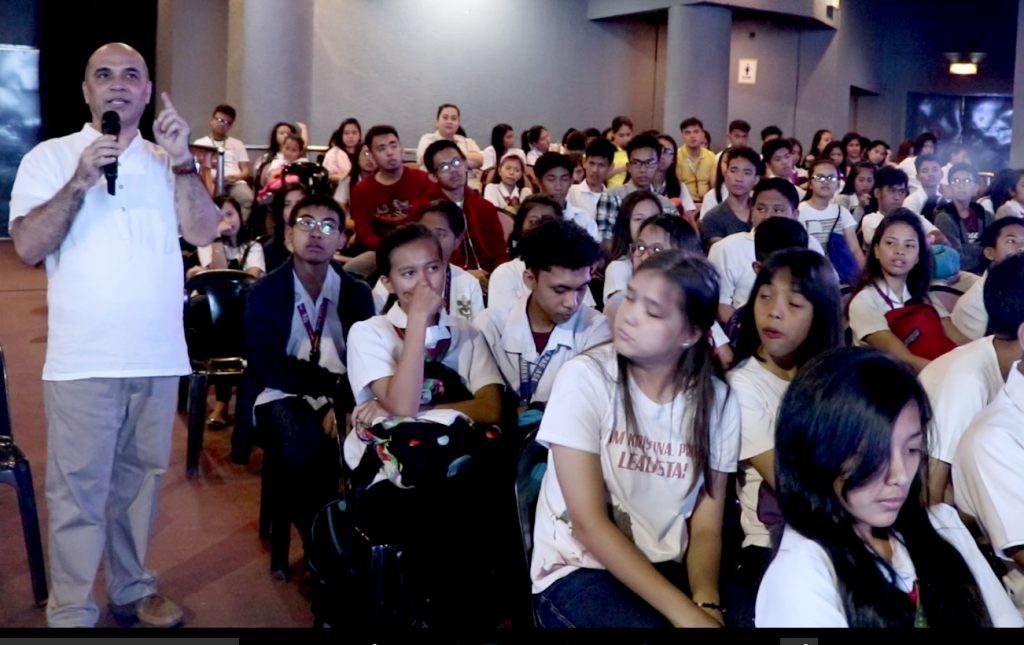
He is the director of the Fine Arts Program of the School of Humanities of the Ateneo de Manila University. He translated many plays into Filipino, such as Ateneo ENTABLADO’s La Mandragola into Ang Birheng Matimtiman (2006) and Tanghalang Pilipino’s The Crucible into Ang Pag-uusig (2017). He directed Ateneo ENTABLADO’s Labaw Donggon: Ang Banog ng Sanlibutan (2013), Sandaang Panaginip (2015), and Batang Rizal (2017). He was awarded as Outstanding Junior Teacher by the Ateneo Schools Parents Council in 2010.
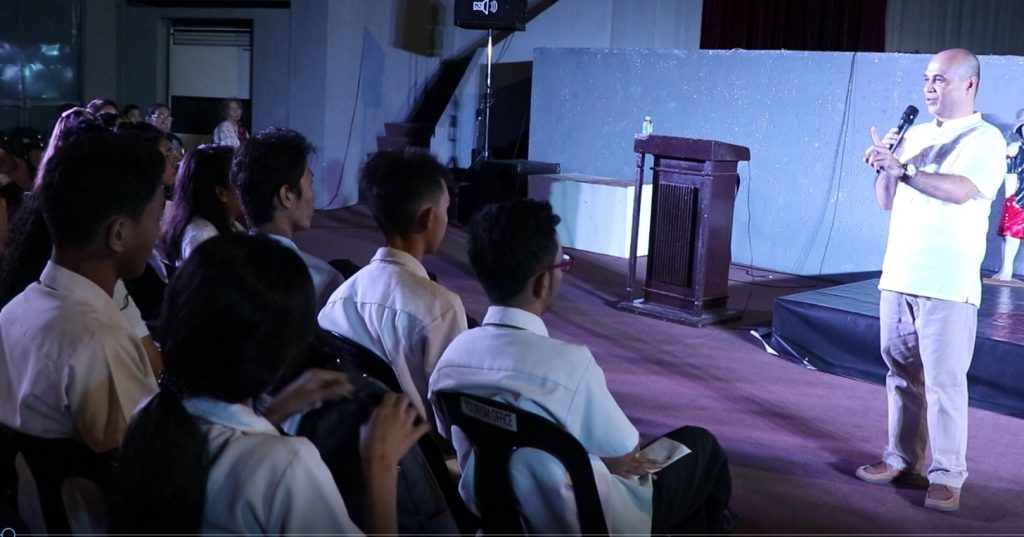
Dr. Jerry Respeto’s talk on Philippine Theater was very enlightening and entertaining. He posed many questions that were enthusiastically answered by the participants.Dr. Respeto talked about dramatic forms and important plays throughout Philippine history.
LUNCH BREAK
Performance: Pangalay by AlunAlun Dance Circle with UP TUGMA and Marikina Dance Guild
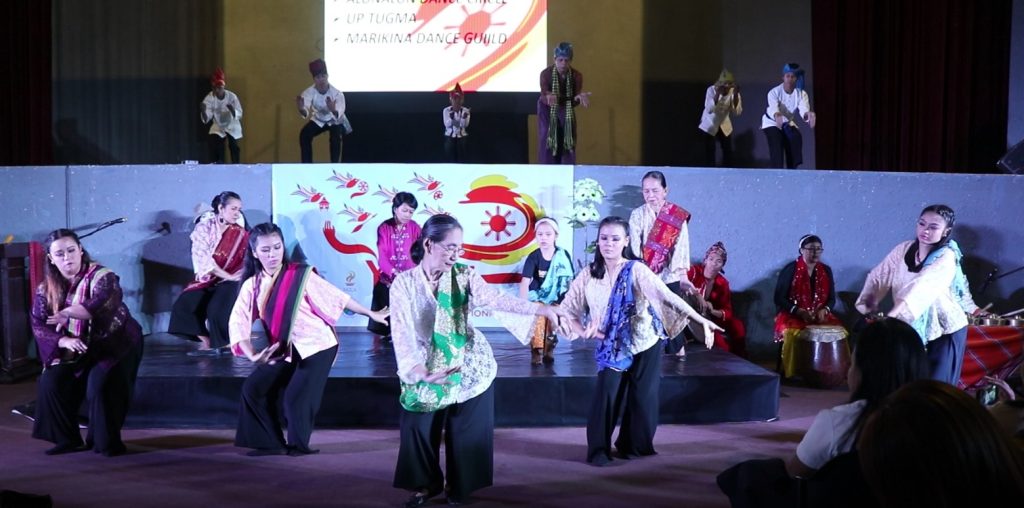
1:15 – 2:45: Film Showing: “Ang Kuwento ng mga Aninong Sumasayaw” about the pangalay dance style and how it is connected with Filipino identity — Pagtuklas ng Sarili Bilang Pilipino sa pamamagitan ng Katutubong Sayaw (Discovering the Filipino Identity through Traditional Dance)
Lecturer: DR. LIGAYA FERNANDO AMILBANGSA
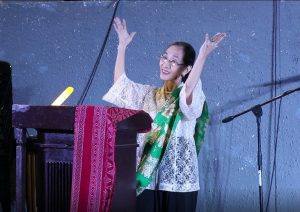 A Ramon Magsasay Awardee in 2015, she is the pioneer researcher, leading advocate, and a master teacher, choreographer, and performer of pangalay (also known as igal or pansak), a little-known traditional dance style of the Sulu Archipelago. Her two books on the ethnic dances and cultural artifacts of the region are Pangalay: Traditional Dances and Related Folk Artistic Expressions (1983) and Ukkil: Visual Arts of the Sulu Archipelago (2006). In 2016 she was conferred the degree of Doctor of Fine Arts, honoris causa, by the Far Eastern University, for her untiring leadership and invaluable contributions to Philippine culture and the arts.
A Ramon Magsasay Awardee in 2015, she is the pioneer researcher, leading advocate, and a master teacher, choreographer, and performer of pangalay (also known as igal or pansak), a little-known traditional dance style of the Sulu Archipelago. Her two books on the ethnic dances and cultural artifacts of the region are Pangalay: Traditional Dances and Related Folk Artistic Expressions (1983) and Ukkil: Visual Arts of the Sulu Archipelago (2006). In 2016 she was conferred the degree of Doctor of Fine Arts, honoris causa, by the Far Eastern University, for her untiring leadership and invaluable contributions to Philippine culture and the arts.
Short Lecture-discussion with Audience Participation: Dr. Ligaya Fernando Amilbanga
3:00 p.m. – Closing Ceremonies and Giving of Certificates
Led by Emcee and ADC Board Member Dr. Pacita Gavino and ADC Artistic Director Ligaya Fernando Amilbangsa
The Youth Seminar was truly successful. The theater was jam-packed in all the sessions. The young people listened attentively and participated in the discussions.
4:00 pm Performance: Medley of Folk Songs by the SDO Marikina Himig Kawayan
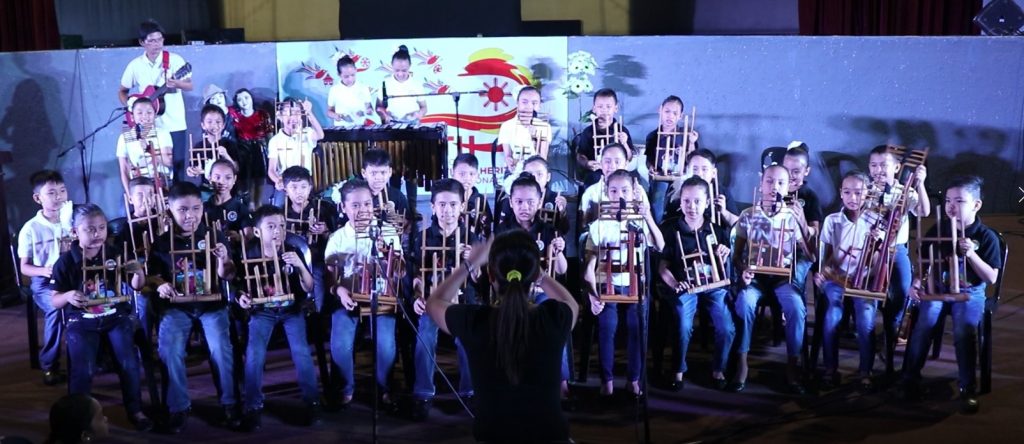
The delightful medley of songs was a celebratory ending to the successful three-day seminar workshop.
After the three-day seminar-workshop, some of the organizers, staff, volunteers, dancers, technicians posed for souvenir photos and selfies.
